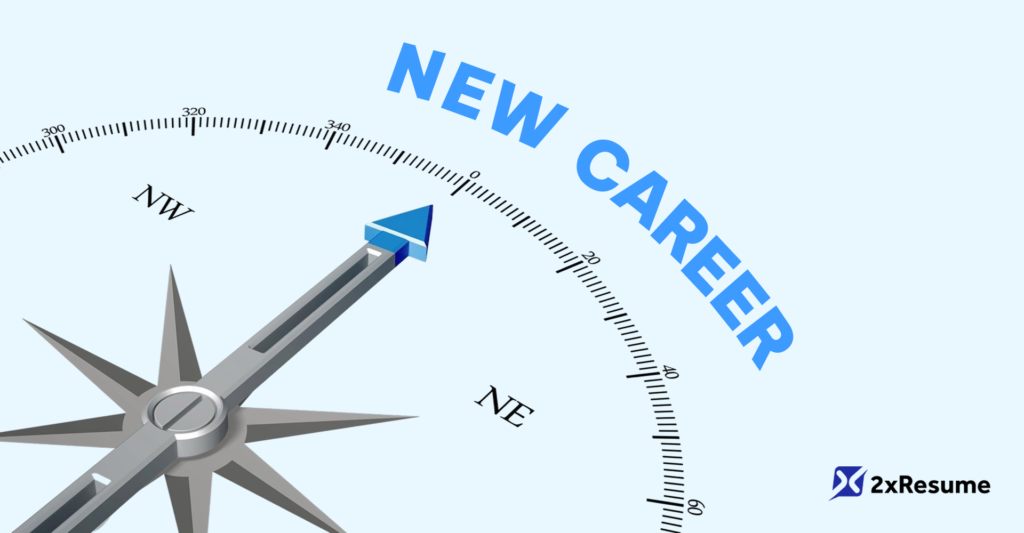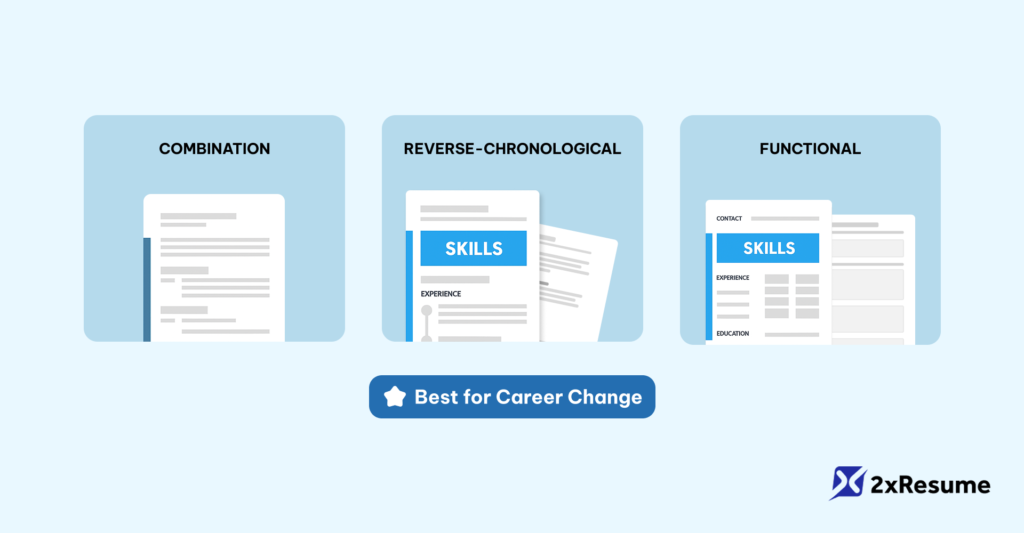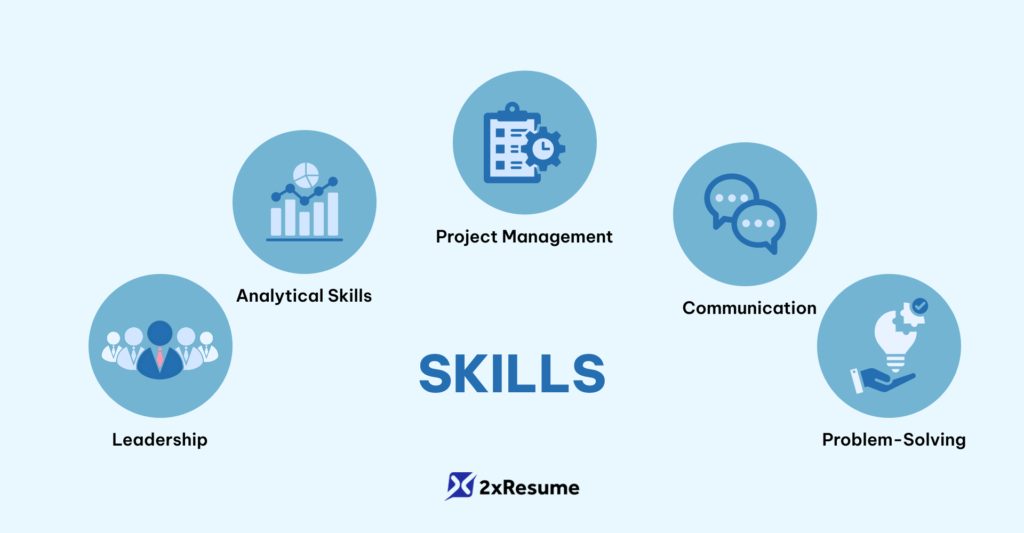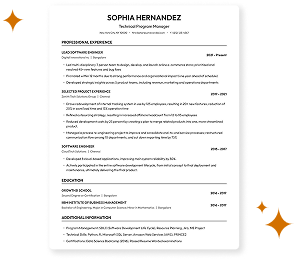Table of Contents
- Introduction
- Why Your Resume Requires a Strategic Overhaul
- Crafting a Compelling Resume Summary or Objective
- Recognizing and Highlighting Transferable Skills
- Reinterpreting Work History for a Career Shift
- Education, Certifications, and Projects
- Speaking the New Industry's Language: Keywords and ATS Optimization
- The Power of a Career Change Cover Letter
- Final Checkpoint: Being Bold and Showcasing Your Whole Self
- Charting Your New Course
The prospect of a career change is a potent mix of excitement and trepidation. It’s the call of a new horizon, a chance to redefine your professional life, and an opportunity to align your work more closely with your passions and goals. But as you stand at this crossroads, one of your most critical tools for the journey ahead is your resume. For a career changer, a standard resume is like an old map for an undiscovered country – it simply won’t guide you to your desired destination. You need a new compass, a new way to chart your course. This guide will help you transform your resume into that powerful navigational tool, steering you confidently towards your new industry.

Why Your Resume Requires a Strategic Overhaul
When you’re shifting industries, hiring managers aren’t just looking at your past job titles; they’re trying to envision your future potential within their world. A traditional resume, heavily reliant on chronological experience in a different field, might leave them struggling to connect the dots. Your challenge – and opportunity – is to make those connections crystal clear.
A career change resume needs to:
Highlight Transferable Skills: These are the abilities and competencies you’ve gained that have value across different roles and industries.
Showcase Adaptability and Eagerness to Learn: You need to demonstrate that you’re not just capable but also enthusiastic about mastering new challenges.
Speak the Language of the New Industry: Using relevant keywords and understanding the new sector’s priorities is crucial.
Bridge the Experience Gap: Your resume must proactively address how your seemingly unrelated past prepares you for this new venture.
Think of it this way: your old resume told the story of where you’ve been. Your new career change resume must tell the story of where you’re capable of going.
Choosing the Right Resume Format
The structure of your resume plays a significant role in how your story is perceived. For career changers, the format needs to strategically emphasize strengths and downplay potential weaknesses, like a lack of direct experience in the new field.
Here are the most effective formats:
The Combination (Hybrid) Resume: This is often hailed as the best choice for career changers. It leads with a strong summary of your skills and qualifications, followed by your relevant experience. This format allows you to showcase your transferable skills prominently before diving into a chronological work history that might seem less relevant at first glance. It’s about showing what you can do for the new employer.
The Modified Reverse-Chronological Resume: While the traditional reverse-chronological format (listing jobs from newest to oldest) is standard, a modified version can work if your recent roles have some overlap or if you can effectively reframe your achievements to highlight transferable skills. If you choose this, your summary and skills section become even more critical in setting the stage for your career change. Some experts suggest that if you lack direct experience, placing a strong education or certifications section before work experience can be a strategic modification.
The Functional Resume (Use with Caution): This format focuses heavily on skills rather than work history. While it might seem appealing to hide a lack of direct experience, many recruiters are wary of it, as it can obscure your career progression and actual work experience. Rezi, for example, advises against the functional resume, suggesting a modified reverse-chronological format is a stronger alternative if you lack experience, as employers prefer to see a clear progression and results achieved in a professional environment. If you have significant gaps or very disparate experiences, it could be an option, but the combination format usually serves career changers better by providing a balance.
Key Takeaway: For most career changers, the combination/hybrid format offers the best balance, allowing you to lead with your most compelling transferable skills.

Crafting a Compelling Resume Summary or Objective
This is your 3-5 sentence opening pitch, your chance to immediately grab the recruiter’s attention and state your case for a career change. It’s arguably the most crucial part of your career change resume.
Resume Summary: Best if you have some relevant experience or significant transferable achievements. It should highlight your biggest accomplishments and explain how they translate to your new chosen field.
Formula: [Your Current Professional Identity/Years of Experience] transitioning into [New Field]. Proven ability in,, and. [Quantifiable achievement showcasing these skills]. Eager to leverage this background to.
Example (Career Change to IT): “Detail-oriented administrative professional with 7+ years of experience in operations management, transitioning into IT support. Proven ability to analyze complex systems, troubleshoot problems and manage data effectively. Successfully led a database migration project, resulting in a 15% reduction in annual costs. Recently earned CompTIA A+ certification to solidify technical expertise and contribute to delivering exceptional IT solutions”.
Resume Objective: More suitable if you have very little direct experience in the new field and need to emphasize your passion, skills, and commitment to learning. However, for career changers, an objective must still be “crammed with your best transferable experience” rather than just expressing desire.
Focus: Clarify your career goals in relation to the company’s mission, state how your current skills will help you succeed, and briefly expand on relevant experiences or achievements.
Example (Career Change to Marketing, from Education): “Highly motivated and creative individual with a background in education, seeking a career change into digital marketing. Possess strong communication and presentation skills, and a deep understanding of social media platforms. Developed and managed social media accounts for a school organization, increasing engagement by 25%”.
Tips for your Summary/Objective:
Be Direct: Clearly state your intention to change careers. Don’t try to hide it.
Keywords are Key: Incorporate keywords from the job description of your target role naturally.
Quantify: Use numbers and data to showcase your impact whenever possible.
Show Passion: Convey genuine enthusiasm for the new field.
Tailor It: Customize this section for every job application.
Recognizing and Highlighting Transferable Skills
Transferable skills are your golden ticket when changing careers. These are the competencies you’ve honed in previous roles that are highly relevant and valuable in your new target industry.

How to Identify Your Transferable Skills:
Analyze Job Descriptions: Collect 5-10 job ads for roles you’re interested in within your new field. Highlight all the skills and qualifications they consistently mention. This is your target list.
Review Your Past Experience: Go through your current resume and past roles. Identify where you’ve used skills that match the target list. Think broadly!
Soft Skills: Communication, teamwork, problem-solving, leadership, adaptability, time management, critical thinking. These are almost universally valuable.
Hard Skills: These can be more specific. For example, if you were a lawyer moving into sales, your research, writing, and persuasive argumentation skills are highly transferable. A teacher moving into corporate training can highlight curriculum design, presentation, and group facilitation skills.
Get Creative (But Realistic): Don’t be afraid to find less obvious connections. For instance, managing a complex project in one industry demonstrates project management skills applicable elsewhere. However, avoid overreaching – helping your cousin with math homework doesn’t make you a qualified teacher, though it might show patience and an ability to explain concepts.
Showcasing Transferable Skills on Your Resume:
Skills Summary Section: Especially if using a combination resume, this section comes right after your profile summary/objective. Group your accomplishments by skill, demonstrating you possess the necessary abilities even without the exact job title.
Example (for a software developer targeting Python):
Python Skills: “Built a Python-based stock tracking webapp with 545 interactive, real-time graphs. Site gets 8,000 visits/month and was cited in ‘Fortune'”.
Throughout Your Work Experience: Weave these skills into the bullet points describing your achievements in previous roles.
Quantify Them: Whenever possible, provide concrete examples and numbers to back up your skills. Instead of “Good communication skills,” say “Presented monthly reports to a team of 15, resulting in a 10% improvement in project alignment”.
Reinterpreting Work History for a Career Shift
Even if your previous jobs seem worlds apart from your new target, your experience section is still vital. It proves you have a work ethic, have achieved results, and possess those universal skills. The key is to frame it correctly.
Strategies for Your Experience Section:
Focus on Relevance: Trim down details about tasks and responsibilities that are irrelevant to your new career path. Focus on achievements and responsibilities that showcase your transferable skills or have some parallel to the new role.
Use Action Verbs: Start each bullet point with a strong action verb (e.g., Managed, Developed, Led, Implemented, Increased, Reduced).
Quantify Achievements: This is crucial. Use numbers, percentages, and data to demonstrate your impact.
Instead of: “Responsible for team tasks.”
Try: “Led a team of 5 to complete Project X 15% ahead of schedule, saving $Y in operational costs.”
Tailor Bullet Points: For each job application, re-evaluate your bullet points. Which achievements best demonstrate the skills and qualities sought in this specific new role?
Consider the “Experience” Heading: If your career change is quite drastic, using a broader heading like “Relevant Experience” or simply “Experience” instead of “Employment History” can give you more flexibility to include volunteer work or significant projects that showcase relevant skills.
Addressing “No Experience”: If you genuinely feel you have no direct experience:
Lean heavily on transferable skills from any previous work, academic projects, or volunteer roles.
Emphasize that a fresh perspective can be a strength.
Example: Graphic Designer to Software Developer
Instead of detailing graphic design software proficiency, focus on:
“Led a team of four designers in a fast-paced graphic design firm (demonstrates leadership).”
“Wrote back-end code for 40 client projects (directly relevant hard skill)”.
Education, Certifications, and Projects
Your education, recent certifications, and even personal projects can be powerful assets in a career change.
Education:
List your degrees, institutions, and graduation dates.
If you’re a recent graduate or your coursework is highly relevant to the new field, highlight specific courses, academic achievements (like a strong GPA), or relevant projects. For example, psychology classes can be useful for HR or management roles.
If you’re many years out of school, you can de-emphasize academic details unless directly pertinent.
Certifications and New Qualifications: These are vital for career changers! They show initiative, commitment to the new field, and that you’ve acquired foundational knowledge.
List any certifications directly relevant to your new career path prominently, perhaps even in a dedicated “Certifications” section.
Mention ongoing courses or training to show your proactive learning.
Projects: A dedicated “Projects” section can be invaluable, especially if your formal work experience doesn’t fully align with your new goals.
Include personal projects, freelance work, or significant volunteer undertakings that allowed you to develop and demonstrate skills relevant to your target career.
Describe your role, the skills used, and any quantifiable outcomes.

Speaking the New Industry’s Language: Keywords and ATS Optimization
Applicant Tracking Systems (ATS) are software programs that scan resumes for keywords and specific formatting before a human ever sees them. For career changers, making your resume ATS-friendly is non-negotiable.
Identify Keywords: Carefully read the job descriptions for your target roles. Note the specific skills, software, qualifications, and industry jargon used repeatedly. These are your keywords.
Integrate Naturally: Weave these keywords throughout your resume – in your summary/objective, skills section, and experience bullet points. Don’t just stuff them in; they should fit contextually.
Formatting for ATS:
Use standard resume section headings (e.g., “Work Experience,” “Skills,” “Education”).
Choose common, readable fonts (e.g., Arial, Calibri, Times New Roman).
Avoid tables, columns, images, and excessive graphics, as ATS can struggle to parse them. Simple, clean formatting is best.
Submit your resume as a.docx or.pdf file as preferred by the employer (PDFs generally preserve formatting better, but some older ATS prefer.docx).
The Power of a Career Change Cover Letter
While your resume lays out the facts, your cover letter tells the story behind the facts. For career changers, a compelling cover letter is even more crucial. It’s your chance to:
Explain Your “Why”: Clearly articulate your motivations for changing careers.
Connect the Dots: Explicitly show the hiring manager how your past experiences and transferable skills make you a strong candidate for this new role.
Showcase Your Enthusiasm: Convey your genuine interest in the company and the industry.
Address Potential Concerns: Proactively (but briefly) address any obvious questions a recruiter might have about your transition.
Zety suggests starting your cover letter by addressing the hiring manager by name, expressing excitement, and then demonstrating your fit with examples of transferable skills and achievements.
Final Checkpoint: Being Bold and Showcasing Your Whole Self
Changing careers takes courage, and your resume should reflect that confidence. Don’t shy away from your unique path.
Be Bold: Highlight significant achievements, even if they seem unconventional for a resume (like obtaining a patent, as mentioned by Enhancv).
Show Yourself: Recruiters want to see who you are beyond the bullet points. If appropriate for the industry and company culture, consider adding a touch of personality – perhaps through a brief mention of relevant hobbies or passions that demonstrate desirable traits (like dedication or creativity). Sam, a user mentioned by Enhancv, included her love for books and even her cat, which sparked conversations at Spotify.
Own Your Story: Your resume is a narrative. Ensure it clearly conveys what you’ve done and what you aspire to do.
Charting Your New Course
Navigating a career change is a significant undertaking, but with a strategically crafted resume as your compass, you can approach it with confidence. By focusing on your transferable skills, tailoring your message, quantifying your achievements, and speaking the language of your new industry, you can create a compelling document that opens doors to exciting new opportunities. Your journey to a fulfilling new career starts with this crucial first step – a resume that truly reflects your potential and guides you toward your destination.








